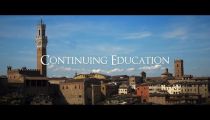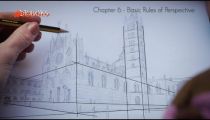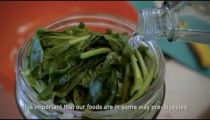#WomenHistoryMonth: Sofonisba Anguissola
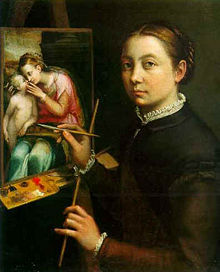
Sofonisba Anguissola, Self-Portrait, 1556, Lancut Museum, Poland.
Sofonisba Anguissola is a rare example of a woman who led a successful career as a painter during the late Italian Renaissance.
She was born around 1532 in Lombardy to a noble but relatively poor family. The eldest of 7 (six daughters and one brother) her family provided her and her siblings with a good education, including the opportunity for artistic instruction. Her talent in drawing and painting became readily apparent and the opportunity to work alongside local artists allowed her to further expand her skills, blazing a trail for other aspiring female artists to come!
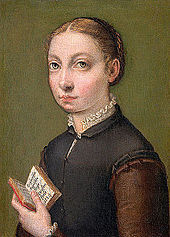
Sofonisba Anguissola, Self-Portrait, 1554
Sofonisba Anguissola’s work was admired by the likes of Michelangelo, who apparently exchanged sketches with the young artist and offered her encouragement (quite a boost for any aspiring artist!).
Giorgio Vasari wrote about Sofonisba Anguissola in his “Lives of the Most Eminent Painters, Sculptors, and Architects” that she
“has laboured at the difficulties of design with greater study and better grace than any other woman of our time, and she has not only succeeded in drawing, colouring, and copying from nature, and in making excellent copies of works by other hands, but has also executed by herself alone some very choice and beautiful works of painting.”
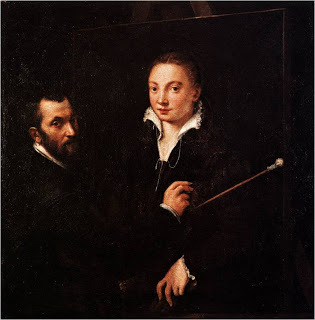
Bernardino Campi Painting Sofonisba Anguissola, c. late 1550s, Pinacoteca Nazionale, Siena
In her 20’s Sofonisba Anguissola painted the remarkable double-portrait which is now held in Siena’s Pinacoteca museum in the Spannocchi Collection. The painting depicts the artist herself being painted by her tutor Bernardino Campi. It is a fascinating work, especially in the context of the art historical discussion of the “male gaze” and “female gaze”. In the remarkably rare position of a female artist, Anguissola depicts herself in this painting as seen through the eyes of her tutor.
Sofonisba Anguissola eventually became an official portraitist of the Spanish royal family, being made made lady-in-waiting to serve as art tutor to the queen Elizabeth of Valois, with whom she developed a friendship over the years.
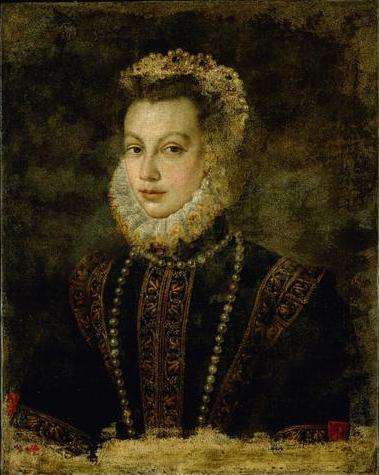

Portraits by Sofonisba Anguissola of her patrons King Philip II of Spain and his third wife Queen Elizabeth of Valois
Sofonisba Anguissola’s residency in the Spanish court lasted more than a decade, and when the queen died from childbirth in 1568 Sofonisba Anguissola found herself in the unusual position for her time of being unmarried and already in her mid 30’s.
Thankfully the King Philip II wanted to make sure that she could continue her career, and helped to arrange an aristocratic marriage for her in 1571 to Fabrizio Moncada Pignatelli, son of the Prince of Paterno, Viceroy of Sicily. After her marriage she continued to receive a royal stipend and was able to continue her work as a painter and tutor to younger artists.
Following her husband’s death in 1579, in her late 40s, Sofonisba Anguissola fell in love with and married (apparently against her brother’s wishes!) a wealthy sea merchant whom she met when traveling on his ship. It was by all accounts a very happy marriage and her second husband was also very supportive of her artistic career.
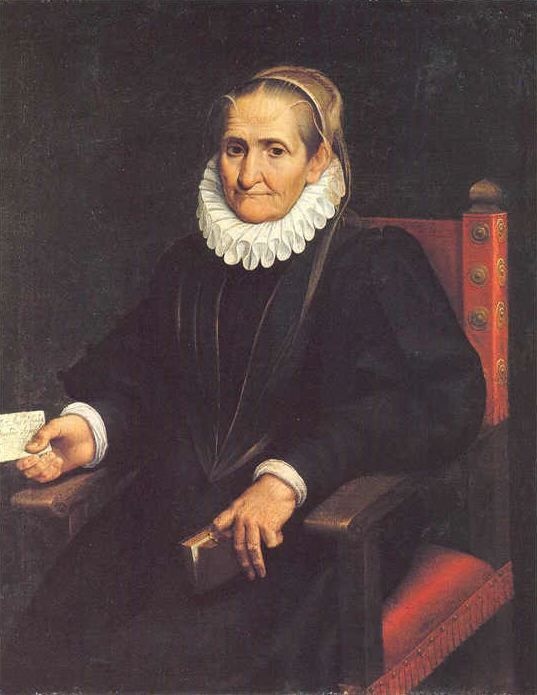
Sofonisba Anguissola, Self-Portrait, 1610
Sofonisba Anguissola never had any children but seemed to have been very close with her relatives and also was an influential mentor to many aspiring artists until finally passing away in her 90’s!
In 1624, the year before she died, she was paid a visit by the Flemish painter Anthony van Dyck, a young man at the time, who made sketches and painted a portrait of the remarkable elderly woman. Van Dyck wrote about meeting Sofonisba Anguissola that “her eyesight was weakened,” but was she still quitesharp-witted!

Anthony Van Dyck portrait of Sofonisba Anguissola, 1624
Today the paintings of Sofonisba Anguissola can be found in museums around the world, including the Isabella Stewart Gardner Museum in Boston the Museo del Prado in Spain the Uffizi Gallery in Florence, and of course the Pinacoteca Museum right here in Siena!
The National Gallery of Women Artists in DC writes:
“Despite her artistic success during her lifetime, Anguissola’s fame slowly disappeared towards the eighteenth century with many of her works being ascribed to male artists. Scant scholarly attention existed about the artist until the 1970s, when historians and feminists began to spotlight the artist for her landmark achievement of opening up painting to women as a socially acceptable profession. Anguissola managed to remain in close touch with Italian artistic innovations over her seven decade career, following artistic trends as she moved from Cremona to Madrid, Sicily, Genoa, and finally Palermo. Financially independent, internationally recognized for her talent, and respected for her creativity and intelligence, Anguissola was a true Renaissance woman.”
I couldn’t say it better myself!
For more reading:
http://www.gardnermuseum.org/collection/browse?filter=artist:3155
http://www.britannica.com/biography/Sofonisba-Anguissola
http://clara.nmwa.org/index.php?g=entity_detail&entity_id=116http://www.newworldencyclopedia.org/entry/Sofonisba_Anguissola
https://etd.ohiolink.edu/rws_etd/document/get/case1339555478/inline
http://www.jstor.org/stable/pdf/2863112.pdf?acceptTC=true&coverpage=false&seq=1#page_scan_tab_contents
Lisa Nonken
Drawing teacher






